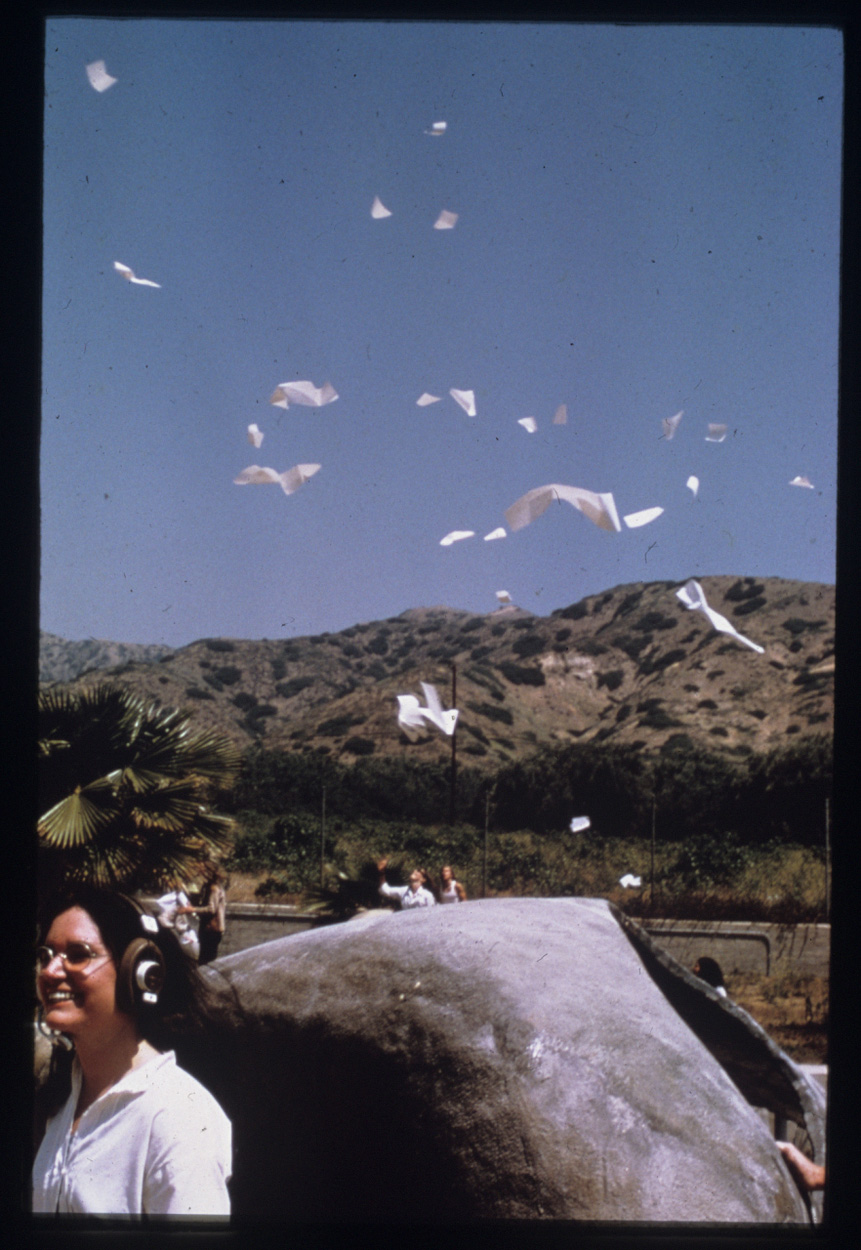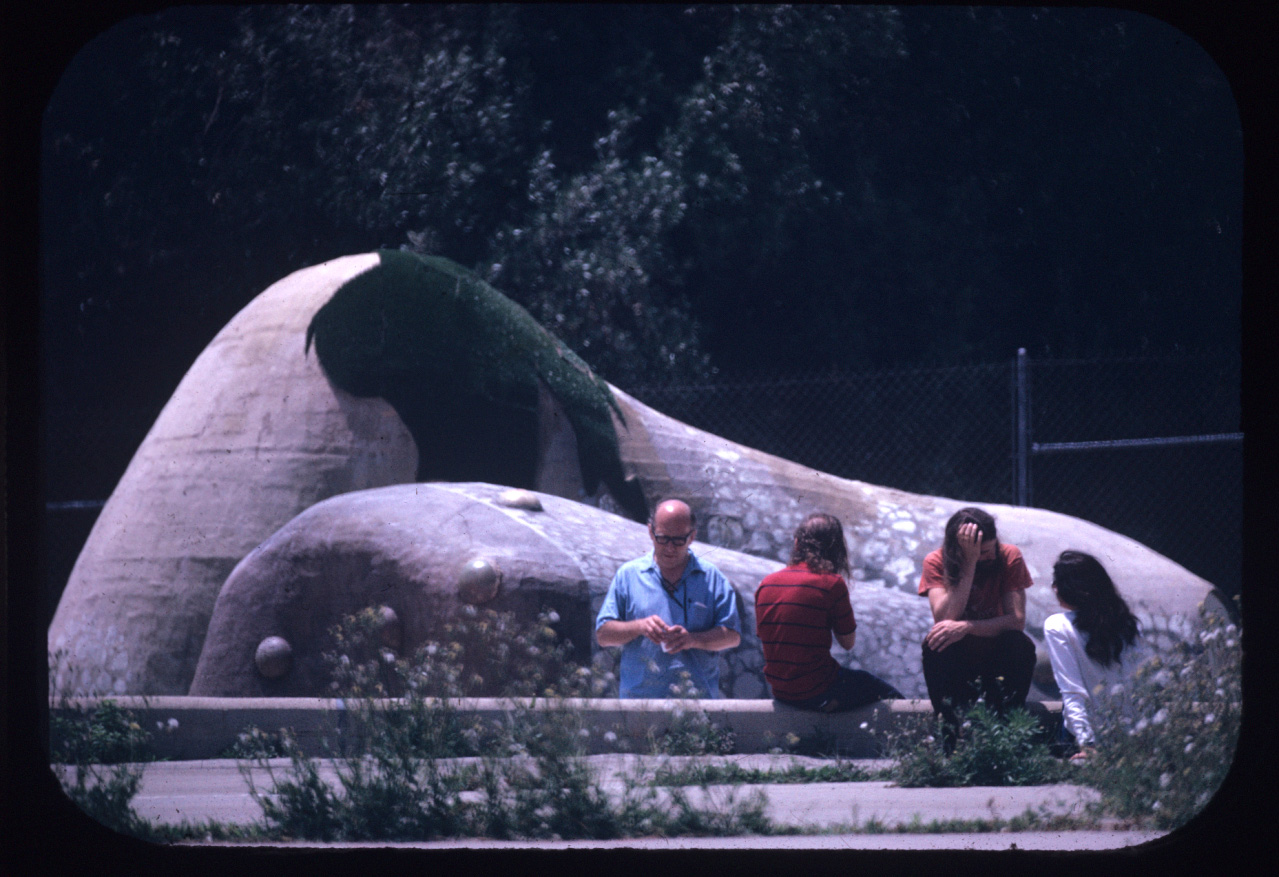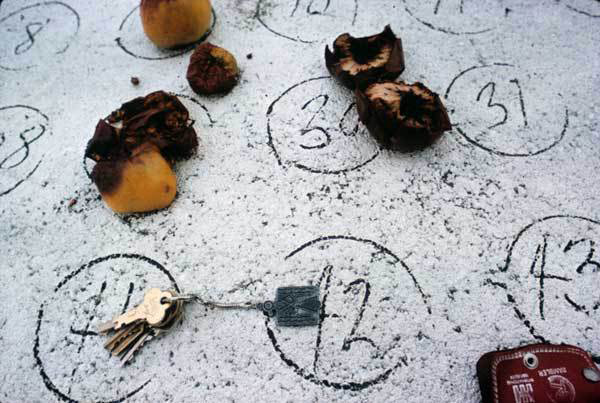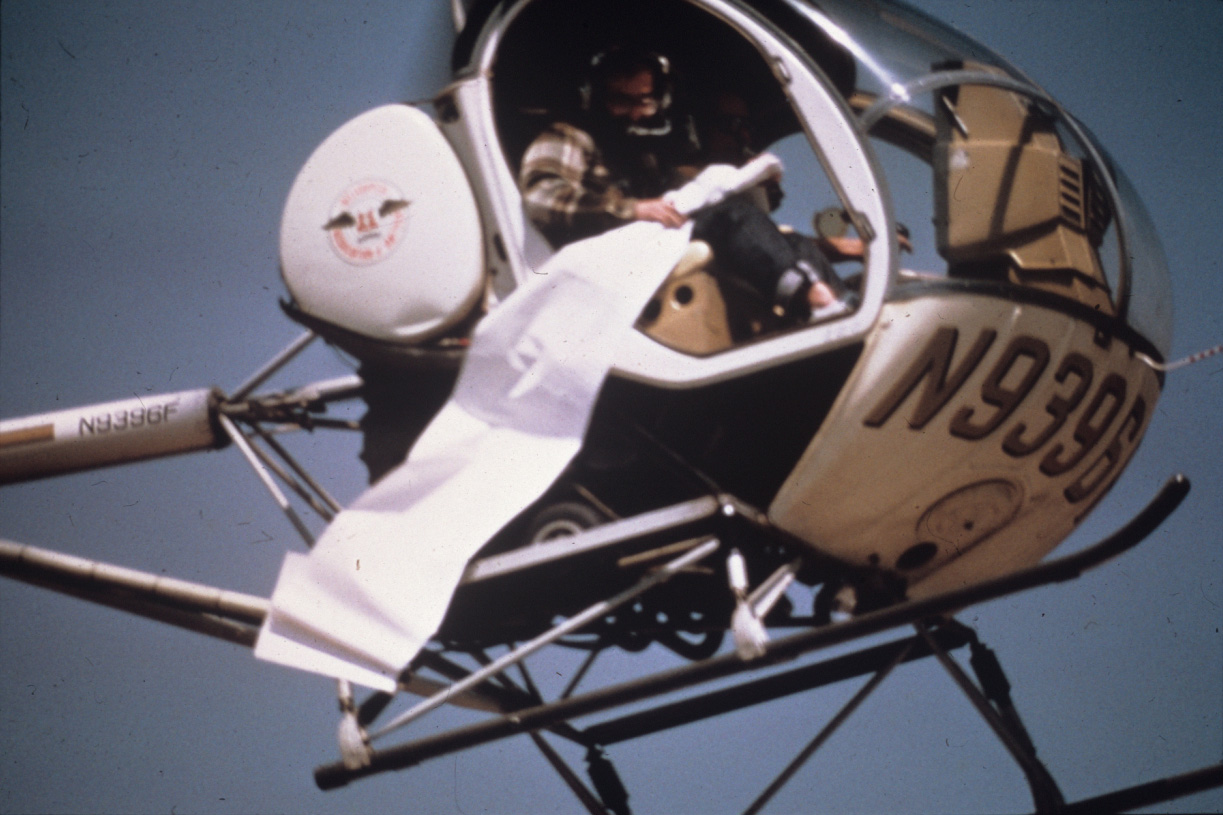JS: Blau was fired by the trustees after the first two years. Corrigan left a few years later.
AK: I think those trustees were really hoping from the beginning that the students would be directed into Disney’s work. And when they discovered that that was the furthest thing from our minds, they became more and more churlish and disappointed with us. And I certainly didn’t want to stay any longer than I did because I felt them kind of closing in. They were paying our salaries and what did an evening event on the land mean to them? Or
Celebration Red with 99 red apples? I mean, just the mindset—not there. And so I was not surprised that finally we were all gone. Also, for an artist living in the east and New York City as I had all my life except for a couple of years at Middlebury College, California was another continent, another world. It was nothing to drive three hours to a party or drive a couple of hours to get your groceries. [
laughs] I just couldn’t do that. I had my car, I did the best I could, but I didn’t even learn to drive until I was 20. So it wasn’t a natural place for me to live. Although we had a wonderful living situation up in the hills of Piru. Richard Teitelbaum and Barbara Mayfield had their house, and I had room for my children and I think somebody else—Peter Van Riper—was up there at that time. And Simone Forti, who’s still a dear friend, was practicing her nudity on a rock in the backyard every morning. And just amazing things going on. I think they were orange pickers’ houses that we lived in.
JS: I wonder how the students seemed to you—did they seem like a different kind of student than you encountered elsewhere?

Alison Knowles, Poem Drop over the House of Dust, 1967.
AK: Well, already they were sort of extraordinary to want to come to that school. I think in any class after a little while there are five or six people who are really doing it and the rest are waiting for them to do it and to follow, and so that fell out quite naturally. The students, at least, in my situation, were engendering their own ideas about what to do, whether it was events at the House of Dust or the zoo in LA or whatever it was that they conceived of as a project. What distinguished them, I think, was a real push into their own lives. If they didn’t wish to do Gift Event II, they weren’t required to, though they might be required to come up with something of their own to offer to the group. I was just so delighted that people actually graduated from that school. They’d had so much experience in so many different parts of the school, with so many different people in the school, that I guess generally a degree was just given if they held out a couple of years there.
JS: It sounds like your teaching there in some ways fit the model of the [Fluxus] event score, in the sense that you’d give students something fairly simple to do that could be interpreted in any number of ways.
AK: Yes, according to the personality or the dimensions of the person doing it. Certainly one of my best-known pieces,
Make a Salad, has been done in the simplest possible way, but as long as you know that you’re doing it as a performance, it has a different aura. It’s my favorite thing to be faced with students putting actions together for a performance after two or three days. I was talking to my host yesterday for a workshop in Virginia, and she said, “You don’t have to bring anything. They’ve got all these pieces they want to do. It’s going to be up to you to edit which ones they do.” And that’s kind of thrilling to me.
JS: How would you say teaching relates to your art practice?
AK: For me, they’re not that distinct. As I said, I have no credentials to teach, but I’m kind of teaching with you now and I’ll do this once in a while. Again, I have no formal way to present—say, as Allan would, having taught for years. But I listen. I like to listen to what people have to say back to me and it helps me to make new work that they have a strong reaction to. Of the hundreds of salads that have been made, there has never been one the same as the other. I had a salad yesterday out on the street while I was doing errands, and I noticed that I never would have put wedges of tangerine in a salad—I never mix fruit with lettuce. So one has one’s idées fixes about salad.
JS: There are a few people I haven’t been able to find much information about concerning their time at CalArts, and I thought you might be able to tell me something about them. One is Maury Stein, who was the first head of critical studies, and the other is Nam June Paik, another Fluxus artist who was also there when you were there.
AK: I know quite a bit about when Paik was there. Stein was a very busy figure and sort of off in the clouds. I certainly met him sometimes and liked him, but Paik was always a close friend. It was very strange for him to take this teaching job, and he didn’t know what to do. He said, “I don’t know how this is going to roll for me.” Also, he always had understandable but crazy English. Paik was always struggling not only to be understood but to figure out what to do. I remember going into one of his happenings in New York, and he still didn’t know what he was going to do really. He had the equipment there, and there was Charlotte Moorman waiting to do something with her cello, and the audience was there, and he was really just putting it all together and in a terrible sweat and terribly nervous about it, running back and forth. But that was always part of the spirit of the piece, and it was not anything that was trumped up or in any way false. He just became terribly nervous when the moment arrived. And so you enjoyed that.
JS: What school was he in at CalArts? Art? Music?
AK: I think he struggled with Shuya Abe to make a video class. Shuya Abe was a very skilled videographer so Paik kind of sat behind Shuya while he taught. But these guys from Tokyo, these two guys really brought video over here in a big way. No question about it.
JS: Did you interact much with people in the schools of theater, music and dance?
AK: Absolutely. I mean, Jim Tenney was a live wire out there. He would eat his lunch at the piano, so every day from twelve to one you could hear him play. It was a very avant-garde piano that he was interested in playing. All those ideas of Cage’s prepared piano were carried by Tenney to CalArts, not that he didn’t have his own way of composing. And he was so outgoing and so friendly that you could ask him about his work and he would talk about it. Certainly one of the highlights of CalArts was Jim Tenney.
JS: So how many years were you there total?
AK: Really two. Dick left after one, and we had two daughters he took back to the East Coast, and I was feeling like I would lose touch with the family if I stayed any longer. If he had stayed out there with the family I might have stayed on. But I was also beginning to wonder about whether I wanted to go on being a teacher or whether in fact I wasn’t losing track of my own work.
JS: What do you view as the failings of CalArts and the way it was organized or not organized in those early years?
AK: Well, I’d just say that we came in there without the organization that a good teacher usually imposes. So I think the people who couldn’t get along there were people—and I mean students—who couldn’t relate. But we really had people all around to help the people who had more traditional backgrounds, the ones who were uneasy about trying to make their own work right away or work outdoors or do something with two dogs and a fish. I mean, whatever was proposed, we’d have people to help and to get something out of that person.



